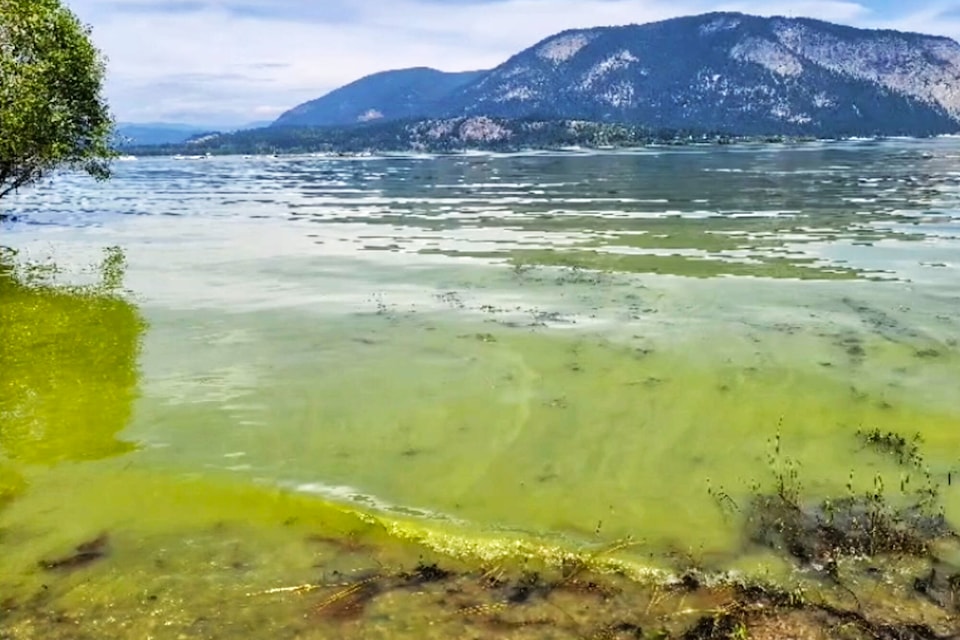By Jim Cooperman
Contributed
The Ministry of Environment recently released a draft report that provides objectives for Shuswap Lake water quality.
The document was produced after years of monitoring efforts and extensive collaboration with local Secwépemc communities. Water quality objectives are provincial policy statements that must be considered in decision-making and are designed to protect watershed uses and values.
Three Secwépemc communities were able to provide detailed input to the report. The Adams Lake Indian Band stressed how it has a sacred relationship with water, which they recognize, honour and respect because it sustains all life. For the Little Shuswap Lake Band, séwllkwe (water) is also considered sacred and is seen as good medicine for all living things. The Splatsin, whose name comes from their word for riverbank, see themselves as the stewards of their home place and the land is not for anyone to keep, “but only to use respectively and wisely so it will remain healthy for generations to come.”
The draft water quality objectives are based on the assessment monitoring data that has been collected since the year 2000 at four points on the lake: the southeast end of Tappen Bay across from Sandy Point, near Marble Point, off Armstrong Point in the main arm, and west of Sorrento near the outflow. At each site, water samples are taken at regular intervals and tested for dissolved oxygen, water clarity, phosphorus, nitrogen, chlorophyll a, total organic carbon and E. coli.
Monitoring results primarily show that the lake water quality is high, except during the spring run-off when the high water flushes nutrients from disturbed land and agricultural operations and for some locations during the summer months. The baseline measurements for all the parameters, which indicate high water quality, became the objectives. Thus the goal for management is to ensure that monitoring/test results never go above the baseline numbers.
Most of the lake is oligotrophic, which is characterized by low nutrient concentrations, clear water and low biological productivity. However, both Salmon Arm Bay and Tappen Bay tend to be mesotrophic, because the water typically contains more nutrients. Thus, the objective for phosphorus is 15 μg/L (micrograms per litre) in these bays, whereas it is 10 μg/L at the other locations.
Read more: Shuswap algal bloom prompts provincial water monitoring initiative
Read more:Shuswap Lake algae bloom dissipating
Phosphorus levels are the primary concern, as high levels can result in algal blooms, which have now occurred twice in Mara Lake (2008 and 2010) and at least once (2020) or likely more times in Tappen and Salmon Arm Bays. The report lays the blame on agriculture (specifically dairy and poultry farms) for declining water quality, as it likely contributes the vast majority of the 95 per cent of the nutrient load to the lake that comes from three rivers, with the Shuswap River delivering the most nutrients, followed by the Salmon River and the Eagle River.
The Ministry of Environment is looking for comments on this draft report before it is finalized. There are definitely some serious flaws in the overall monitoring efforts, the actual report and the management system that is meant to rely on objectives. Testing water quality in two of the sites will always show high water quality because the lake is, and will likely always be oligotrophic. Testing near Blind Bay is useful because of all the septic systems in the South Shuswap, and it is critically important in Salmon Arm Bay, because of the persistent amount of nutrients coming from the Salmon Valley. Testing should also be done in Mara Lake, as that is where there have been two algal blooms due to the high volume of nutrients flowing into the Shuswap River.
Objectives may be useful for the number crunchers, but if and when the numbers are high, there is no plan for addressing the root problems. The government continues to avoid creating strict regulations for farming that limit the spreading of manure and the use of fertilizer. Studies show how farmland in the Shuswap River valley is saturated with high concentrations of phosphorus, and if farmers stopped adding more it would take more than 100 years for these levels to decrease significantly. Thus, despite the setting of objectives, the threat of more algal blooms will continue as long as fields near the rivers continue to be treated with manure and fertilizer.
newsroom@saobserver.net
Like us on Facebook and follow us on Twitter
Sign up for our newsletter to get Salmon Arm stories in your inbox every morning.
